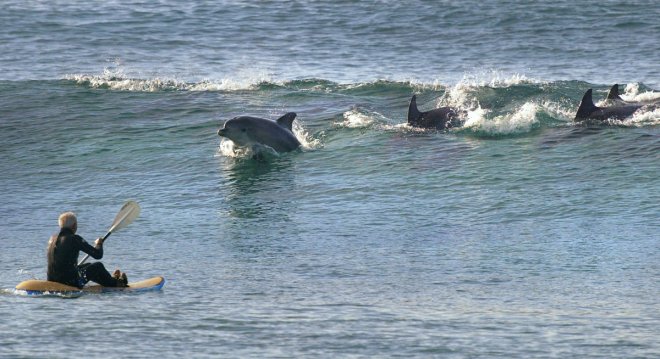
Plastic debris from the 2011 Japan Tsunami has resulted in the migration of nearly 300 marine species from the Japanese shores to the Hawaii and West coasts of the US, found a study.
The tsunami which had impacted adversely Japan on March 11, 2011, after an earthquake of magnitude 9.0 had resulted in swiping of tons of plastic wastes to the ocean. The 125 feet high waves had washed out millions of objects including small plastic objects, boats, and docks into the sea.
The marine creatures entrapped in the the debris were carried along by the sea waves to the distant shores of Americas, revealed a research paper published in the journal 'Science',
Greg Ruiz, co-author of the paper and marine biologist at the Smithsonian Environmental Research Center wrote in the report: "I didn't think that most of these coastal organisms could survive at sea for long periods of time. But in many ways, they just haven't had much opportunity in the past. Now plastic can combine with tsunami and storm events to create that opportunity on a large scale."
The researchers from the Smithsonian Environment research center and other institutions have found out 289 marine species of Japanese origin in the US coastal region. They said that there are chances for more species which might have been left unnoticed. More and more new species are being found from the debris of tsunami, they noted.
The biologists reported that nearly 2/3 of those species were never seen on the US west coast before, especially the Mollusks which were the most common invertebrate guests. Worms, hydroids including sea anemones and jellyfish, crustaceans and bryozoans which have the habit of colonizing in the underwater beds were also found among the new guest species.
The open ocean is known to have a harsh environment which prevents the coastal marine creatures from surviving the transoceanic voyage. The plastic debris had worked as a raft for the species to survive the deadly ocean currents. The non-decomposing nature of the plastic has also made a safe haven for the organisms to survive and reproduce in them elsewhere.
These ocean rafts are also thought to have traveled at slower speeds which helped the organisms to adjust to the changing environment. Fiberglass was said to be one of the most common forms of plastic wastes.
However, the species which started arriving at the new coast by 2012 haven't yet started colonizing themselves and the impact of the natural tsunami-driven rafting is still unknown, said researchers.
John Chapman of Oregon State University noted: "This has turned out to be one of the biggest, unplanned, natural experiments in marine biology, perhaps in history." He added that management of plastic should be given prime importance as prevention of tsunami is not an option.
The report said that over 10 million tons of plastic waste enters ocean each year and it may increase to 10 times more by 2025. The natural calamities like hurricanes and typhoons add to the debris formed. This, in turn, boosts further migration of species. The ecological impact of plastic waste is a pertinent concern as ever.









